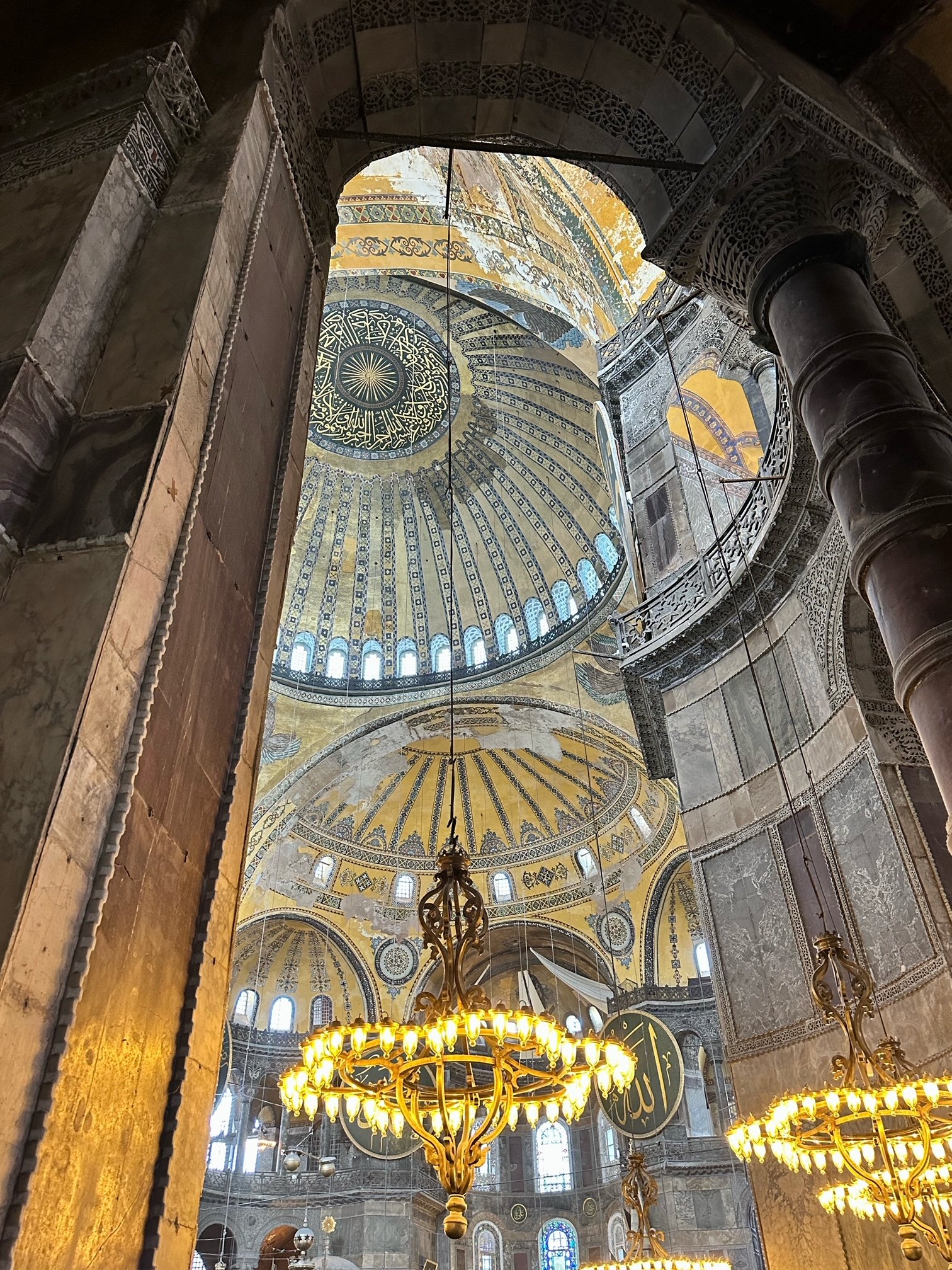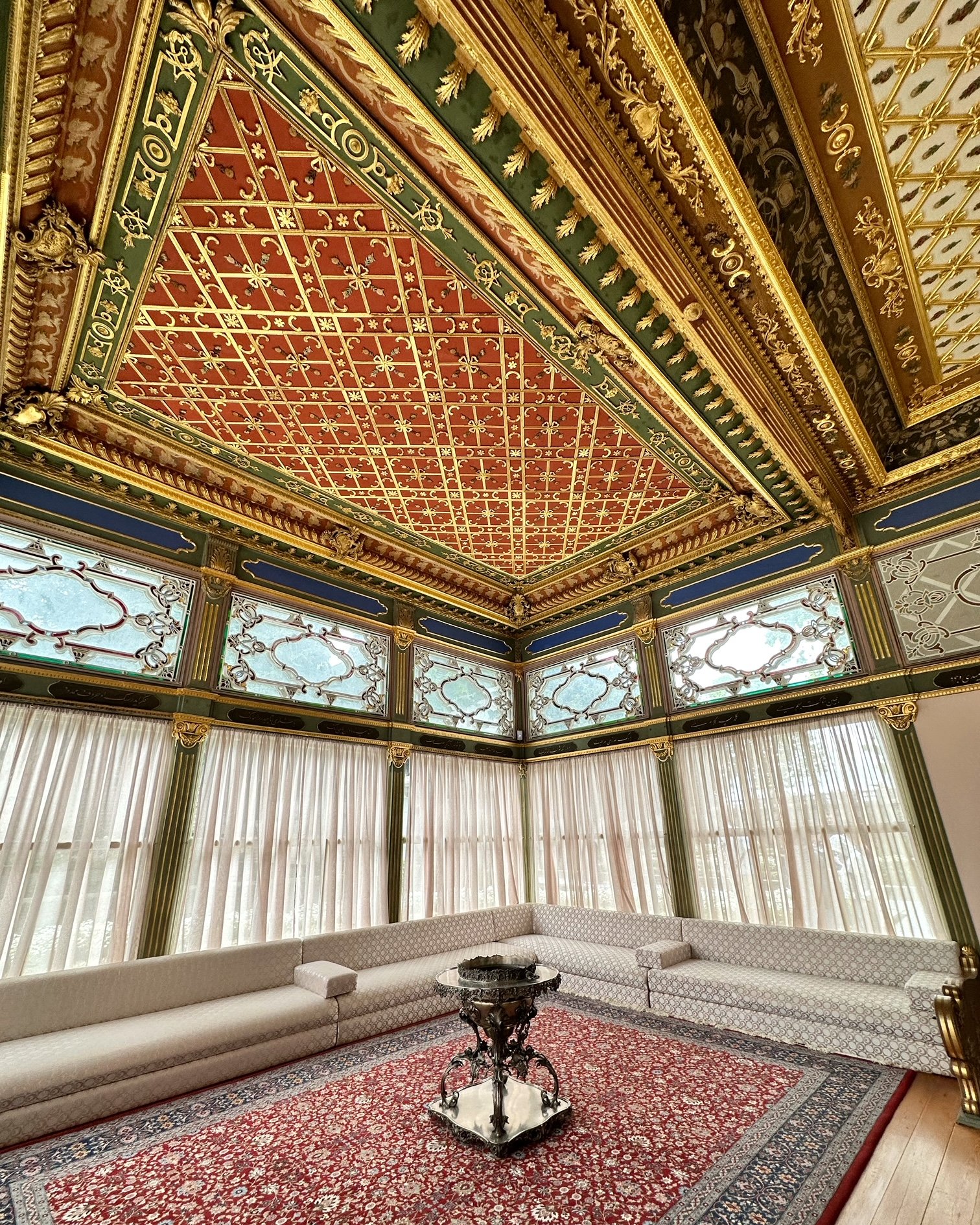Turkish Delights: Explore the Best Architecture and Design in Istanbul
Istanbul: a spellbinding city where cultures collide, has been associated with major political, religious and artistic events for more than 2,000 years. 3 days exploring stunning designs await you in Sultanahmet, the old part of Istanbul. At each place you will find it hard to imagine anything could be more intriguing, except, the next place may top your last experiences.
Geographically Istanbul is the only city in the world that can claim to be straddling 2 continents, first as the capital of the Byzantine, and then the Ottoman Empire, and has for centuries been a bustling metropolis with one foot in Asia and the other in Europe.
The city is full of architectural marvels, from mosques to palaces to houses built centuries ago, still standing today. Fascinating sites and landmarks like the Hagia Sophia Mosque, the Blue Mosque, Basilica Cistern and the nearby Topkapi Palace Museum are rich with Ottoman splendor and history.
I highly recommend staying at a hotel in Sultanahmet, the old hilly historic part of Istanbul, where driving in a taxi can take you hours, by foot or by tram everything is within easy reach.
My favorite places:
1. Grand Bazaar
2. The 17th century Blue Mosque
3. Hagia Sophia Mosque, a significant Unesco Heritage site
4. Basilica Cistern
5. 15th century Topkapi Palace, now a museum
6. Theodosius Cistern
7. Spice Bazaar
The Grand Bazaar: (Kapalıçarşı) in Istanbul is one of the world's most famous shopping destinations. Get there early to enjoy the beautifully painted ceilings before the crowds arrive. You can enter from 21 gates, and once inside, the Bazaar's 64 streets and smaller alleyways house roughly 4,000 stores. Many stores and streets are filled with gold, rugs and touristic items, but take a stroll in the narrow, old original bazaar alleys to explore the best in Ottoman jewelry and antiques. During the Ottoman Empire, jewelry and precious hand-woven textiles were gathered in the Grand Bazaar from all over the country to be sold, and is truly a shopping paradise for those of us who especially appreciate traditional textiles and authentic jewelry.
The bazaar is like a hidden city full of wonders and treasures. Visitors can enjoy not only an incomparable shopping experience, but also a unique atmosphere that reflects Istanbul’s spirit. 3 hours will fly by too fast. Take in the bustling atmosphere and feel the unique energy. Listen to the traders shouting out deals in different languages, trying to lure visitors into their shops. This way, you may get the chance to encounter a lot of interesting people. Enjoy some tea with Turkish hospitality, while talking with the vendors, although know that they will be hopeful that you will buy their goods.
Let yourself drift into the labyrinth of wide and narrow alleys and discover places off the beaten track. What you may find:
· Oriental carpets & kelims
· Antiques
· Textiles (from plain fabrics to dresses and made-to-measure suits)
· Gold, silver and diamond jewelry
· Turkish light fixtures
· Leather, silk & fur
· Shoes, bags and accessories
· Household goods
· Souvenirs
· Handicrafts
· Turkish sweets, herbs and spices
The mesmerizing Blue Mosque (Sultan Ahmet Mosque) is located within easy walking distance along the Sultanahmet, also known as the Hippodome Square. Imagine yourself as a young 13-year old sultan in charge of an empire spanning 3 continents: Asia, Europe, and Africa. How do you leave your mark on the fabric of the city that your forefathers coveted and conquered? You commission one of the finest mosques in the heart of the Imperial city.
Completed in 1617, the mosque dominates Istanbul’s skyline with its elegant composition of ascending domes and six soaring minarets. You enter the mosque from a spacious courtyard where visitors line up to enter into a large unified prayer hall crowned by the main dome.
The Blue Mosque remains an excellent example of imperial Ottoman Mosque architecture and is a symbol of the intricate and complex history of Istanbul, a city where East meets West. This masterpiece of Ottoman architecture, with its blend of traditional Islamic and Byzantine elements, showcases the aesthetic grandeur of an epoch and stands as a testament to the aspirations of a young Sultan.
Why is it called the Blue Mosque? Thousands of hand-painted blue tiles adorn the interior walls. Its sublime aesthetic appeal extends beyond these tiles to include intricate mosaics, beautiful stained-glass windows, and an imposing exterior characterized by cascading domes and slender minarets.
Large suspended and seemingly floating chandeliers bring a human scale into this large masterpiece of architecture. As the mosque is a working mosque, it is closed to visitors and non-worshippers for 45 minutes before the call to prayer and 15 minutes afterwards.
Note: women must wear a headscarf and cover shoulders and shorts are not allowed. Head scarfs can be borrowed, but I recommend that you bring your own.
When you exit the Blue Mosque you will see Hagia Sophia Mosque, which has been Istanbul’s most iconic site throughout centuries and across empires. Built as a Byzantine church in the 6th century, it was converted into a mosque when the Ottomans took control of the city. Step inside, and the massive building leaves you in awe. The awe of age, history, and of miraculous architecture.
Due to its historical background, and passing through the hands of various cultures, both the exterior and interior of Hagia Sophia display an incredible odd mixture of Islamic, Catholic, Paganist, and Orthodox architecture and art. This is what makes the Hagia Sophia so incredibly special, differentiating it from all the other mosques and churches that can be found in Istanbul. After lining up under the hot sun, you enter at the measured pace of a religious procession, and Hagia Sophia reveals her secrets, one by one: drafty, somber, aged, dank, lofty and glorious. Overlapping domes, semi-domes and arches reveal so many layers of history and leave us guests in a silent awe.
Hagia Sophia was a museum for years, but is again a working mosque. It is closed to visitors and non-worshippers for 45 minutes before the call to prayer and 15 minutes afterwards and women must wear a headscarf and cover shoulders. Head scarfs can be borrowed, but I recommend that you bring your own.
A wonderful cool way to end a vibrant day of sightseeing, is to step across the street from Hagia Sophia to visit the underground Basilica Cistern.
One of the best kept secrets of Istanbul: beneath the city lie hundreds of stunning Byzantine cisterns, built by Romans from Roman relics. The Basilica Cistern dates back to the Byzantine period and was used to provide water to the neighborhood. It was restored in the 1980’s and is now an evocative, cool, eerie and amazing site to visit. Music fills the void with magical acoustics and lighting effects enhance the underworldly ‘cathedral’. Concerts are held on certain days, which must be such a stunning experience! Check it out if you can.
The columns carved with a variety of styles behold various mysteries. One of which is called the teardrop column, or crying column. Per the legend, this column was built as a representation for the thousands of hardworking slaves, many of whom died during its construction. One of the most prominent features of the Basilica Cistern is Medusa’s head. James Bond fans may remember the movie ‘From Russia With Love’ when Bond is rowing in a small boat through a forest of marble columns.
Note: A long line of visitors start queuing from early in the morning, and the cost was of recent 800 Turkish Lire. I recommend getting a tour guide to skip the line, and hear the history behind this masterpiece of architecture for 2,000 Turkish Lire.
Day 2: Topkapi Palace Museum.
This is a standalone experience, where you plunge into the cultural and administrative headquarters of the Ottoman era. A place of such beauty, overwhelming riches and history, it is easy to spend a day, or days, if you have the time and patience.
Home of the Ottoman sultans for nearly 400 years, the monarchs lived in Topkapi’s hundreds of rooms with hundreds of concubines, children and servants. The interior design of the palace is adorned with intricate details and flamboyant wall decorations, in an intriguing blend of Baroque and Ottoman architecture. The Harem, with its captivating interior design, is one of the palace's most mesmerizing sections. If only the walls could speak….
The Palace is a royal depiction of the country’s amassed riches and glory, consisting of four main courtyards and is an extensive complex of smaller buildings and pavilions, interconnected with galleries and passages.
Entrance fee is 750 Turkish Lire as of 2023. The ticket price includes the Hagia Irene Museum in the first courtyard of the palace (currently under renovation and I recommend skipping this) and the audio guide. The price of the harem ticket alone is 350 TL. However, if you buy a combined ticket that covers all three sections, it costs 950 TL
Day 3: Back to the Bazaars. This time visit Spice Bazaar
No visit to Istanbul is complete without stopping by the atmospheric Spice Bazaar. While the Grand Bazaar is the largest and most famous of Istanbul's covered bazaars, the spice market wins the prize for being the most colorful, fragrant, and often the most fun – as visitors can taste the goods on offer.
Aside from the spices, there are rosebud, jasmine, and fruit teas: Turkish delights in every color and flavor; herbal remedies for seemingly everything you can imagine; dried fruits such as apricots, figs, dates, and even strawberries and kiwis; honey and nut soaked baklava; olive oil soaps; exotic sounding Turkish herbal teas, such as Harem tea, Turkish coffee and so much more.
You may want to revisit the Grand Bazaar, if that special jewelry, kaftan or kelim is still occupying your mind? It was…
At last, I had to visit the Theodosius Cistern, in search of yet another magical underground architectural delight. It might seem that everything erected in Constantinople in the 5th and the 6th centuries was of colossal proportions: mainly regarding its public buildings and fortifications, but also the water supply system.
Although the Theodosius Cistern is smaller than the Basilica Cistern, the visit is a very rewarding experience. On the one hand, it is never as crowded as the Basilica Cistern. On the other hand, it has a much more pleasant ambience and offers a more exceptional intimate, aesthetic experience. Thus, it combines the best features of the other two cisterns: magical water-world atmosphere and splendid solitude. This cistern is a relatively new point on the map of Istanbul's tourist attractions as it was not open for tourists until April 2018.
The cistern is not only a tourist attraction, it also hosts art exhibitions and cultural events.
Since there are 2 alternating light shows in the cistern, visitors are taken downstairs every hour. If you go at a random time, you may have to wait at the door until visitors are admitted during the show time. I wish I had bought tickets for both light shows, as I was still in awe and found it difficult to leave this magical cathedral of sound and light. I was spellbound and spent an extra sensory 15 minutes alone in this magical space, before being forced to ascend.
Special concerts are held during the summer and I wish I had scheduled my visit around a concert. Entrance fees as of June 2023 800 Turkish Lire.
Finally take a sunset cruise on the Bosporus Strait, to study the geography and cultural significance of this sprawling capital spanning 2 continents.
Take a sunset cruise on the Bosporus Strait, so see the highlights of the city from afar.
“Istanbul has such an alluring amount of history, diverse culture and architecture, and I highly recommend visiting these truly stunning delights”













































